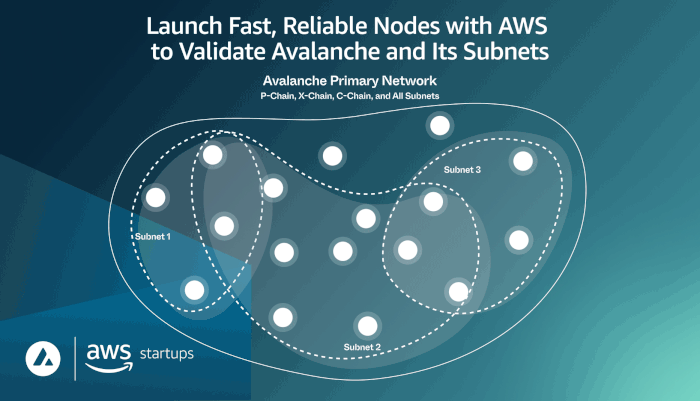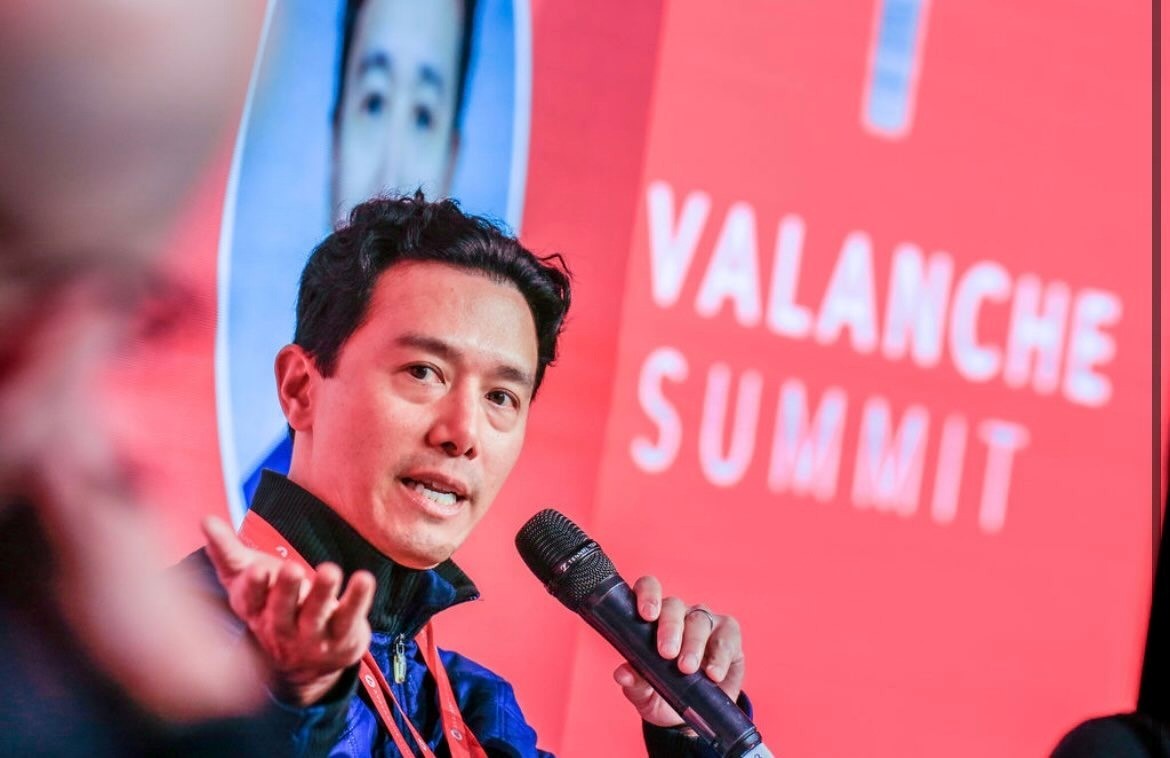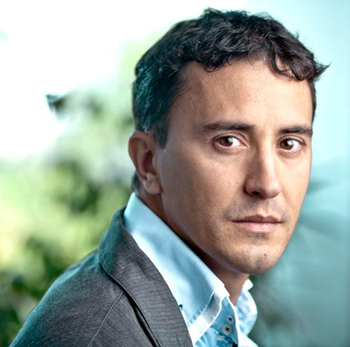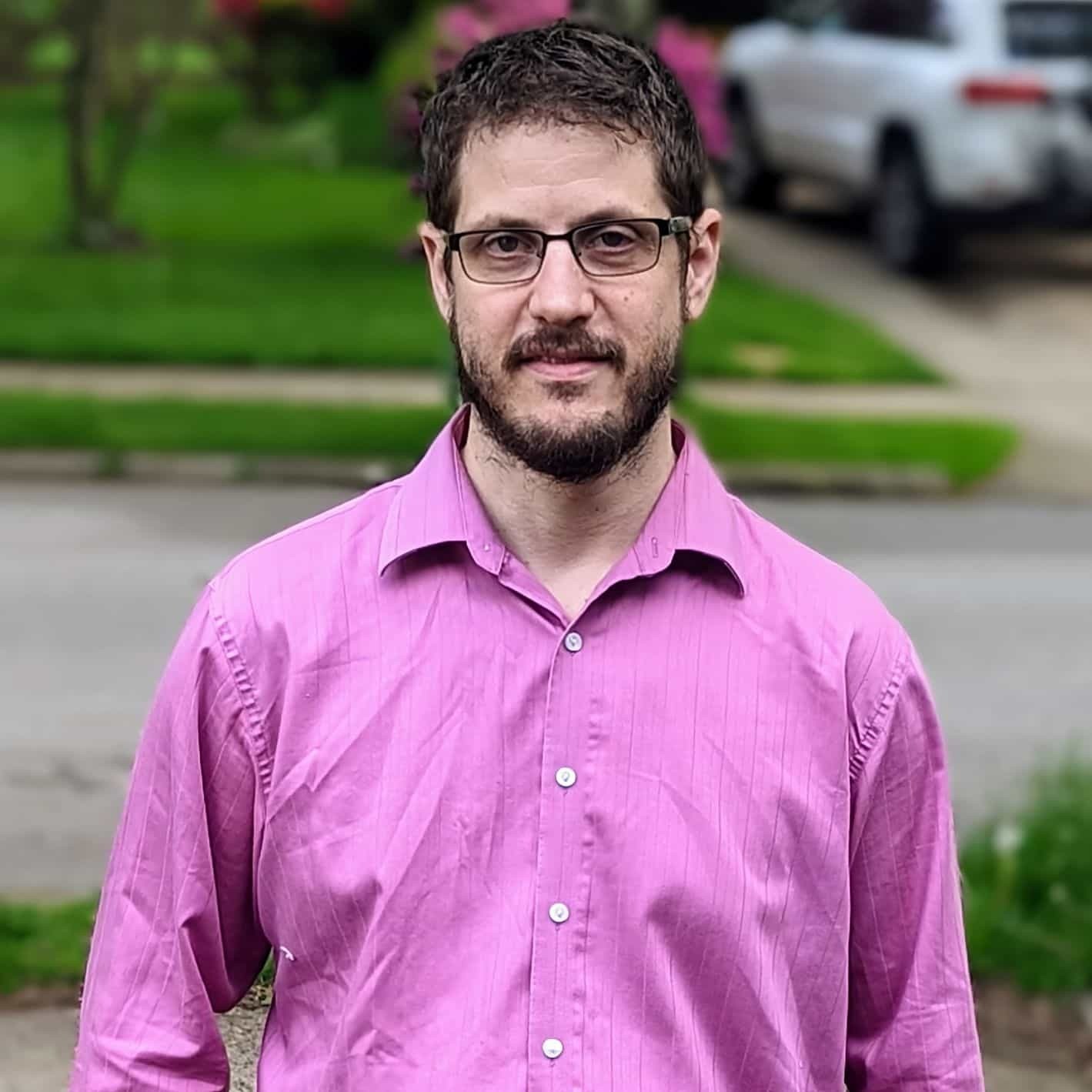How was this content?
- Learn
- Building application-specific blockchains with AWS on Avalanche
Building application-specific blockchains with AWS on Avalanche

Imagine a world where transactions—selling a house, trading an asset, paying out a claim—finalize in seconds or less. Contract, payment, and receipts are all tied together in a single action, with the history of the trade permanently logged. The transfer does not require third-party involvement, bypassing centralized middlemen, such as banks, brokers, and agents.
This world is built on blockchain, decentralized and unchangeable digital ledgers that maintain a growing list of transactions stored in “blocks.” Mainstream companies are rapidly embracing blockchains to optimize their costs, while providing faster, safer, more transparent products to their customers.
A recent Alchemy Web3 development report notes that 36% of all existing smart contracts were deployed in 2022. Per Gartner, the business value generated by blockchain is expected to grow from $176 billion in 2025 to $3.1 trillion in 2030.
Realizing the value of academic research and founding Ava Labs
A digital disruptor fueling this mainstream growth of blockchain is Ava Labs, the startup responsible for launching the Avalanche blockchain platform and a primary contributor to innovation happening on the chain. Founded in 2018, Ava Labs is helmed by a team including co-founder and chief executive officer (CEO) Emin Gün Sirer (whose preferred name is Gün) and president John Wu.
“The process that took us to Avalanche started in 2006 and took many years of research in peer-to-peer systems and self-organizing systems that pre-dates Bitcoin and others,” explains Gün, describing his 20 years as a leading professor of distributed systems at Cornell University.
John explains, “Our mission is not just to play in the world of crypto; we want to tokenize all the world’s financial assets to create a better system for everyone.”

Tokenization converts something of value into digital units of asset ownership. Digitized assets can:
Eliminate the inefficiencies of traditional transactions, such as paperwork and human capital
Send easily and quickly
Create greater fractionalization opportunities (division of an asset so more people can participate in ownership) and market liquidity (the ease with which an asset can be bought or sold)
Digitized assets also remove geographical and systemic barriers to access, such as the third-party incumbents who own traditional finance processes.
“It’s time to democratize finance entirely,” says Gün. “You, me, and everybody else can be on an equal footing with the bankers. Scales differ, but the opportunities open to us must be identical.”
Blazing a trail in web3 with novel blockchain infrastructure
Launched in September 2020, Avalanche started a new era for blockchains with near-instant transaction finality. Today, 500+ apps are built atop Avalanche, which is an eco-friendly protocol with minimal energy usage. These apps span the web3 universe, including projects in decentralized finance, blockchain gaming, NFTs, and enterprise use cases. Ava Labs’ work addresses three longstanding challenges in the blockchain space:
Flexibility. The rigidity of monolithic, or single, blockchains can lead to a lack of use-case fit for apps, as well as congestion which results in higher fees for users.
Adaptability. Avalanche allows users to create application-specific blockchains (Figure 1), called “Subnets.” Subnets are customizable and improve the speed and scalability of decentralized applications (“dApps”) hosted on the blockchain.
Scalability. A blockchain platform on which others can build needs to support thousands of transactions per second and have rapid finality.

“Instead of a single chain to rule them all, Avalanche is more like an umbrella where anyone can create their own chain,” says Gün. “These chains isolate activity away from the main network: a load spike on my chain shall not affect the performance of your chain, nor will my fee activity or congestion affect your chain.”
The critical technology behind Subnets is the Avalanche consensus protocol. A consensus protocol ensures the digital ledger is constructed in an orderly fashion and that the nodes sustaining the ledger agree on its state.
There are three principal approaches to consensus protocols:
- Proof of work. “This control mechanism was pioneered by Bitcoin, by Satoshi Nakamoto, and is a brilliant idea to use mining to create the chain. The nice thing is that it’s open and anyone can participate,” says Gün. “The issues are scaling and that it consumes a lot of energy.”
- Proof of stake (classical or signature accrual). “These are more energy efficient, but they’re not as decentralized,” Gün explains, “Only a few hundred participants can participate in each decision at a time. That’s the downside compared to proof-of-work protocols.”
- Avalanche. Per Gün, “Avalanche combines the best of the other two mechanisms: It doesn’t need mining: it’s efficient, it’s fast; it’s decentralized. Avalanche uses proof of stake, but its method of random sub-sampling to achieve consensus is different.”
In addition to the Avalanche consensus protocol, “We are the team that has brought the most recent scientific advances to blockchains. With our platform, with our bridge—which is the biggest bridge in crypto—and with our Core wallet and our new marketplace, Enclave,” explains John. “There is simply no other team that has pioneered as much web3 technology as we have.”
Ava Labs teams with AWS to accelerate web3 adoption
To support its technology, Ava Labs built a serverless architecture and is all-in on AWS. AWS’ cloud solutions, global presence, and proactive partnership are “absolutely essential” in the Ava Labs march to accelerate web3 adoption.
AWS cloud solutions for scalable blockchain infrastructure
Avalanche uses AWS solutions such as Amazon Elastic Compute Cloud (Amazon EC2) to deliver consistent millisecond performance in order to confirm transactions instantly and process thousands of transactions per second.
“It has been a huge, huge boon to all of our developers to be able to spin up nodes on the fly, spin up test networks on the fly, using AWS,” says Gün.
He continues, “Our processes for spinning up Subnets relies on dynamically-provisioned AWS instances so that people can easily, quickly launch their own chain in a couple of clicks.” With AWS global footprint, Avalanche is able to launch customized blockchains, private and public, in seconds to scale with demand.
Ava Labs also participates in AWS Activate, a free program that helps startups to build and scale by offering its members AWS credits, resources, tools, and expert advice. John explains, “AWS Activate is an excellent resource for developers to bring applications to the masses with Avalanche’s trailblazing speed, security, and scalability at their core.”
AWS Marketplace makes it easy for global users to launch a validator node
As a result of AWS’ global infrastructure and commitment to compliance, it is simple for global users to launch an Avalanche Validator Node from the AWS Marketplace. “Number one on my list of how AWS helps us is by allowing customers to launch validator nodes out of whatever legal jurisdiction makes sense for them,” Gün explains.
Ava Labs plans to add subnet deployment as a managed service to the AWS Marketplace in 2023.
John explains, “AWS is so valuable as it streamlines developers being able to go from zero to in-production with dedicated infrastructure. This is especially important to early stage and startup Web3 projects who really benefit from that blockchain-as-a-service model.”

Building the future of web3 with Ava Labs and AWS
In its commitment to providing blockchain execution environments to great developers around the world, Ava Labs is partnering with AWS to host entrepreneur- and developer-focused events.
These events give web3 developers and researchers the opportunity to learn from industry experts and collaborate with their peers to maximize success for their respective startups and products. Educational curriculums include topics such as product market fit, go-to-market strategy, protocol and dApp design best practices, Avalanche-specific technical guidance, and more. Often, these events will feature competitions judged by leading venture capitalists and web3 professionals, ensuring that top-tier individuals and teams find continued support after completion of the program.
“We’re looking for great talent in the developer community who want to make the jump to web3,” John says.
“One of the best things about blockchain is that if you want to develop in this space, it’s a lot easier to start today than when Gün started,” explains John. “Developers can focus on the app they want to build on a Subnet, and they don’t need to do the whole laborious architecture process over again.”
To developers in web3, Gün advises “Part of our success story was to keep the vision incredibly broad, instead of specializing, and to ensure what we are doing ties into the societal problems of the day.”
“Ventures can succeed and fail. At the end of the day, you want to go home and say, ‘I worked on something meaningful today,’” says Gün. “If you tackle something of importance to people and remain true to the things that you know to be good for society at large, you will be fulfilled.”

Emin Gün Sirer
Emin Gün Sirer is co-founder and CEO at Ava Labs. Previously, he was a Professor of Computer Science at Cornell University, where his research focused on operating systems, networking, and distributed systems. He is well-known for having implemented the first currency that used Proof-of-Work (PoW) to mint coins, as well as his research on selfish mining, characterizing the scale and centralization of existing cryptocurrencies, and having proposed the leading protocols for on-chain and off-chain scaling. He is the Co-Director of the Initiative for Cryptocurrencies and Smart Contracts (IC3), which aims to move blockchain-based applications from whiteboards and proofs-of-concept to tomorrow’s fast and reliable financial systems.

John Wu
John Wu is President of Ava Labs, an Andresseen Horowitz backed technology company building the next-generation blockchain platform: Avalanche. John’s objective is to open up financial services and products to all. In this role, he leverages his expertise from over 20 years as a fintech executive and technology investor to create a blockchain-enabled solution for originating, issuing, and trading financial assets. John was previously CEO of the SharesPost Digital Assets Group, enabling compliant token trading of private shares and funds. Prior to that, he was a technology investor and the founder of Sureview Capital, a global hedge fund backed by the Blackstone Group.

Megan Crowley
Megan Crowley is a Senior Technical Writer on the Startup Content Team at AWS. With an earlier career as a high school English teacher, she is driven by a relentless enthusiasm for contributing to content that is equal parts educational and inspirational. Sharing startups’ stories with the world is the most rewarding part of her role at AWS. In her spare time, Megan can be found woodworking, in the garden, and at antique markets.

Shai Perednik
Shai Perednik is a global leader in web3 and blockchain technology with 5.5yrs at AWS and over 28 years of experience in the IT industry. He leads the segment for the partner organization and leads a community of 1600+ Web3 enthusiasts. He has been in the blockchain space since 2010 when he built a bitcoin miner and in 2020 fully immersed into the blockchain space at Amazon, focusing on its foundations. Shai's conviction in blockchain fuels a passion that we are at a point of major technological revolution that will shift the way society operates.
How was this content?